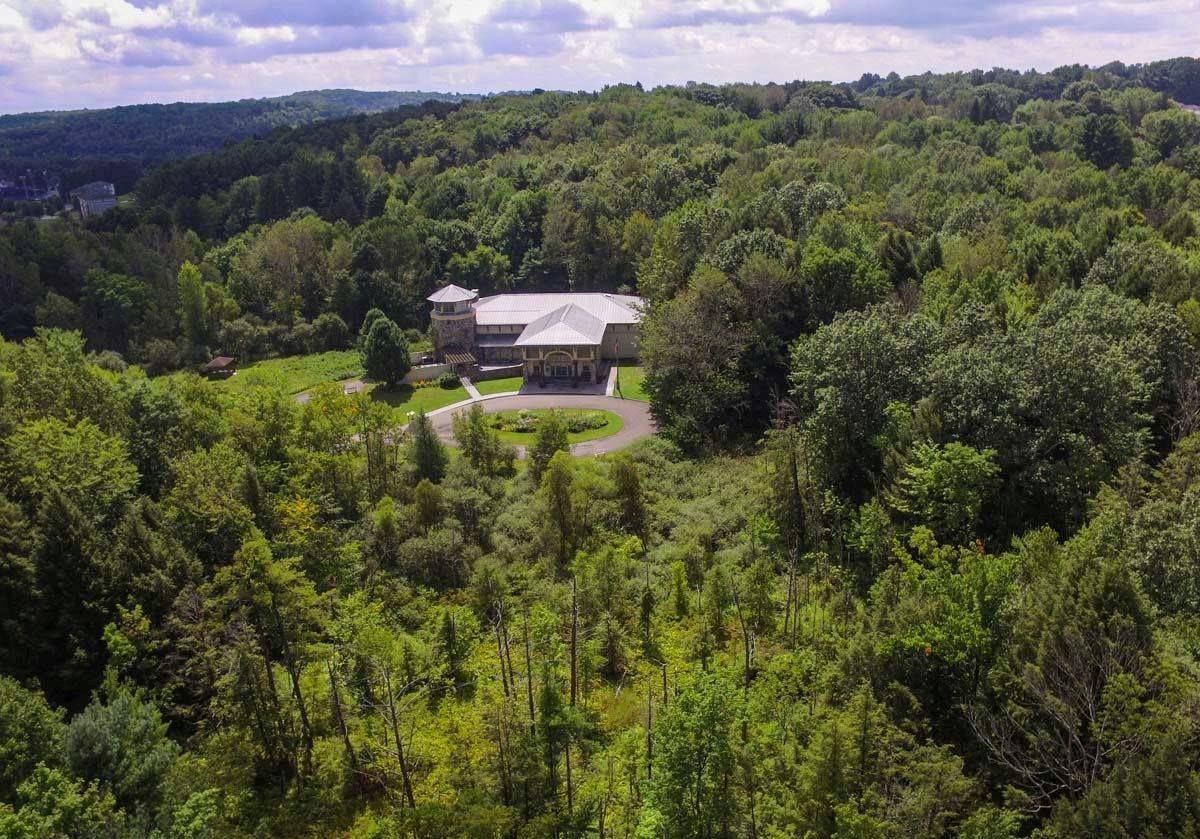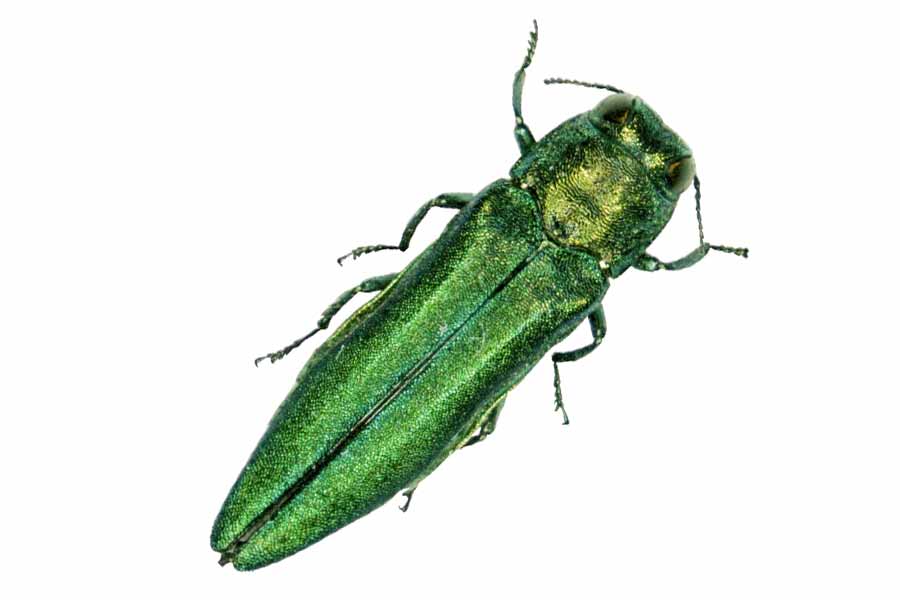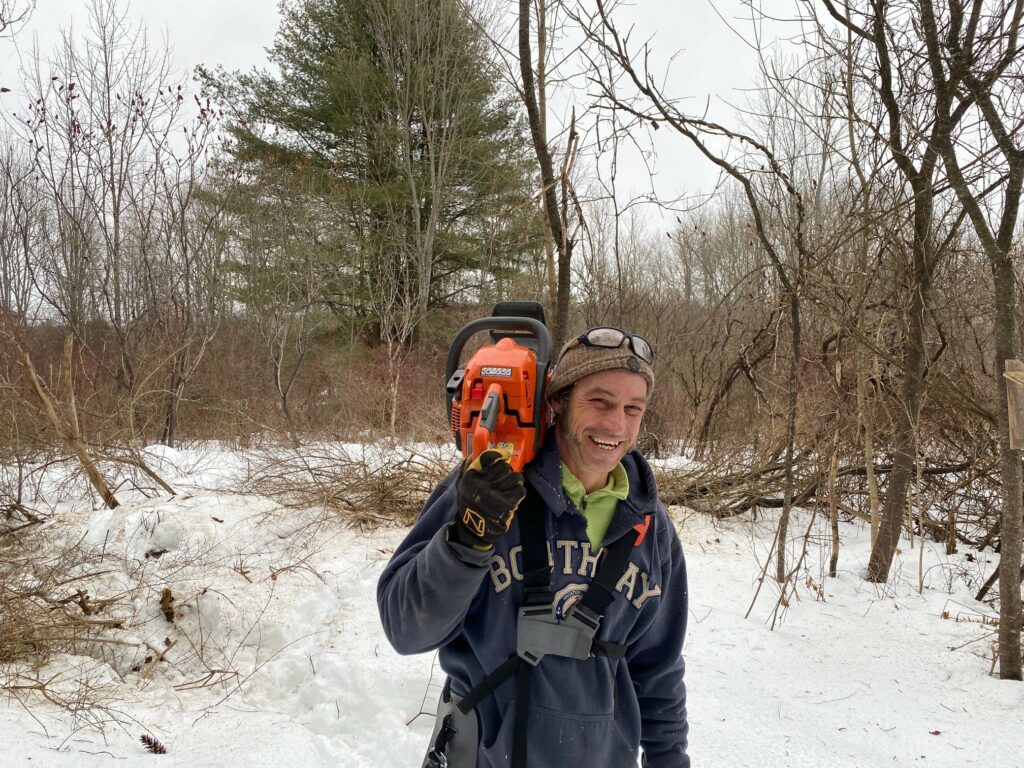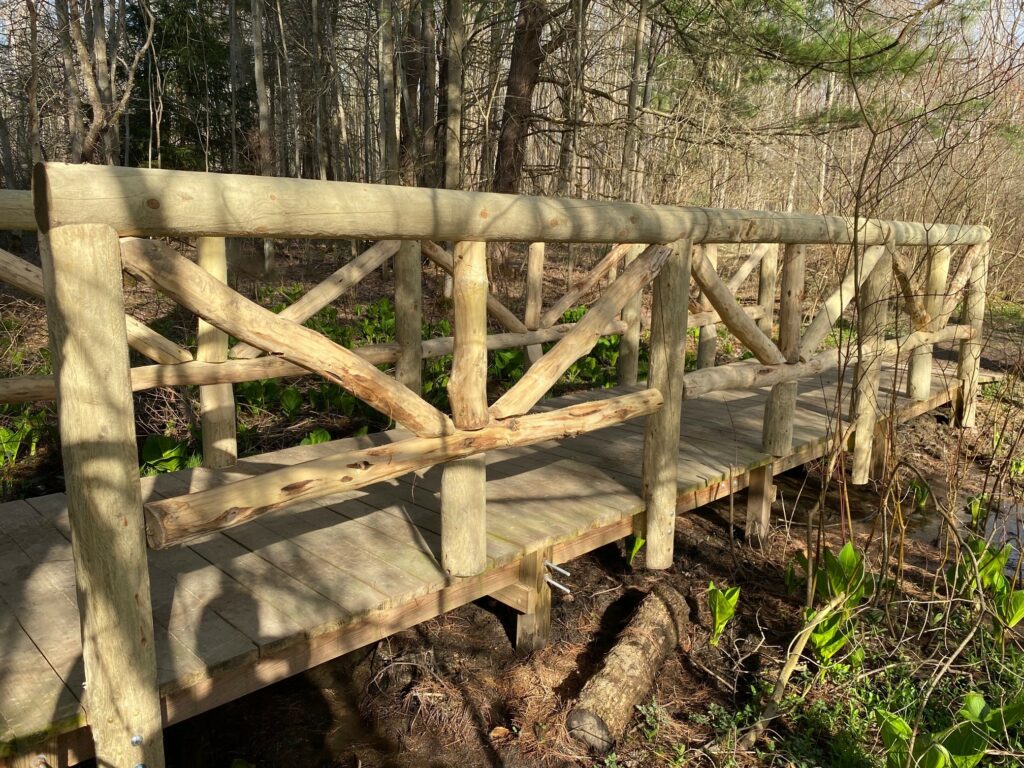
What happens when former farm fields, like those at RTPI, go fallow? Why not leave them alone and let nature take its course? Well, first of all, it would take centuries for the forests that were cut down to return. Eastern hemlock trees, for instance, can take up to 300 years to reach full maturity. Northern red oaks can grow up to two feet per year and — in the right conditions — live to be 500 years old.
In the short-term, faster growing tree species would naturally come and go. However, the introduction of invasive, non-native trees and shrubs has complicated natural succession. Left unchecked, multiflora rose and Asian honeysuckle can quickly overrun even healthy woodlands. Dense thickets of these invaders rob the forest floor of sunlight and moisture, making it difficult for young native trees and wildflowers to grow.
With proper management, however, recovering farmland can be restored to a healthy state — with a diversity of native trees and shrubs, which in turn support a diversity of birds, mammals and other critters. That’s what we’re doing at RTPI — we are managing our preserve to be healthy today and healthy for future generations of visitors.
The area in front of you has been cleared of invasives, as well as dead ash trees, victims of the emerald ash borer. Roughly half an inch long, this non-native beetle first appeared in Cattaraugus County in 2009. Since then, it has spread to all but a small handful of counties in New York state, decimating populations of native ash trees.

Sometimes when invasive trees and shrubs get a foothold, it takes a big effort to remove them. Winter is a good time to undertake such restoration work — when the ground is frozen, it makes moving in heavy equipment and hauling out debris easier with less impact on the rest of the preserve.

There are many creeks, rivulets and seeps that run through the Peterson Preserve. To protect these fragile ecosystem gems — and to keep your feet dry — we have installed several new bridges along the trail. Notice that they are designed to complement the porch railings on The Lodge at RTPI.
